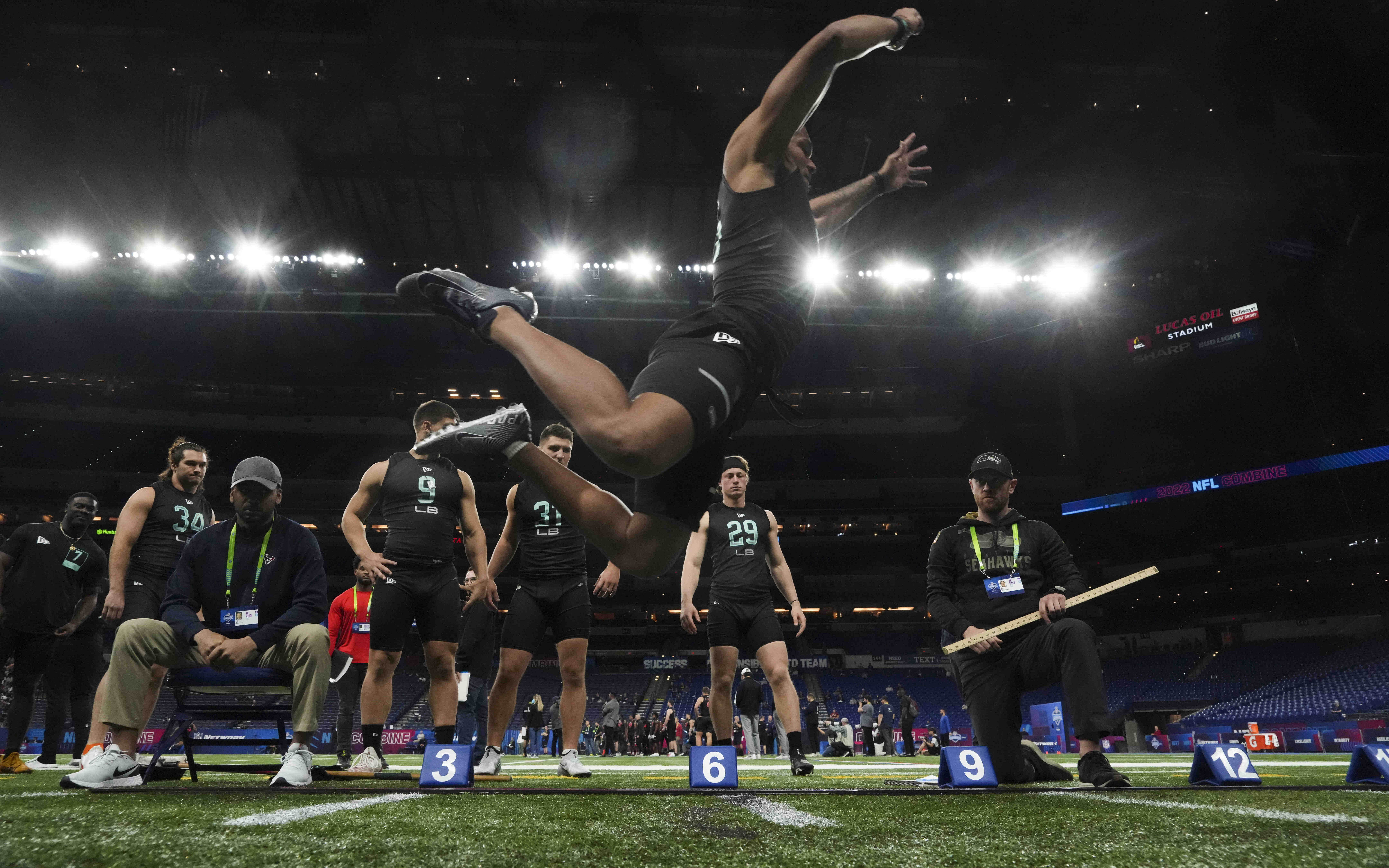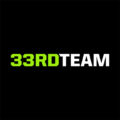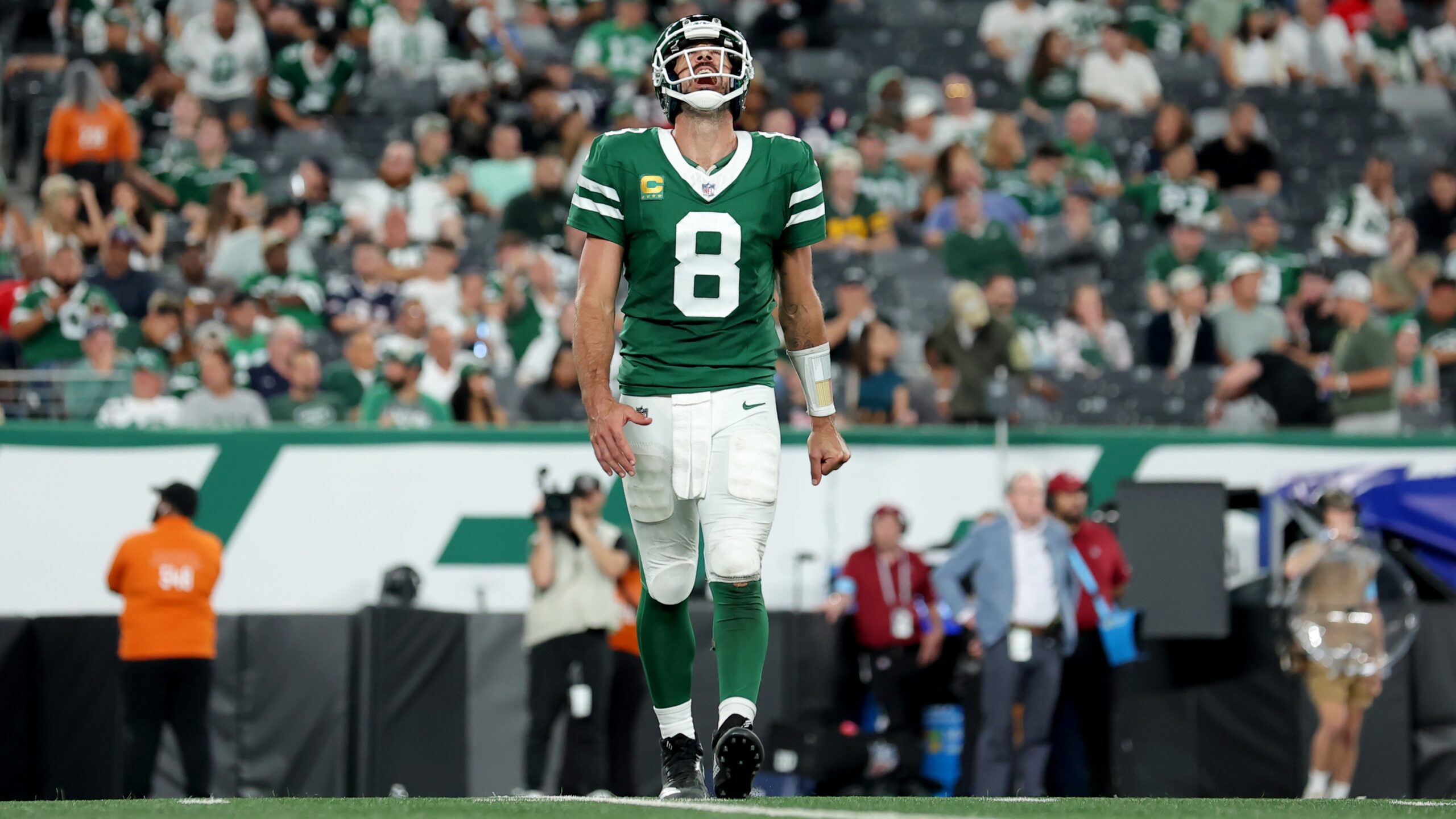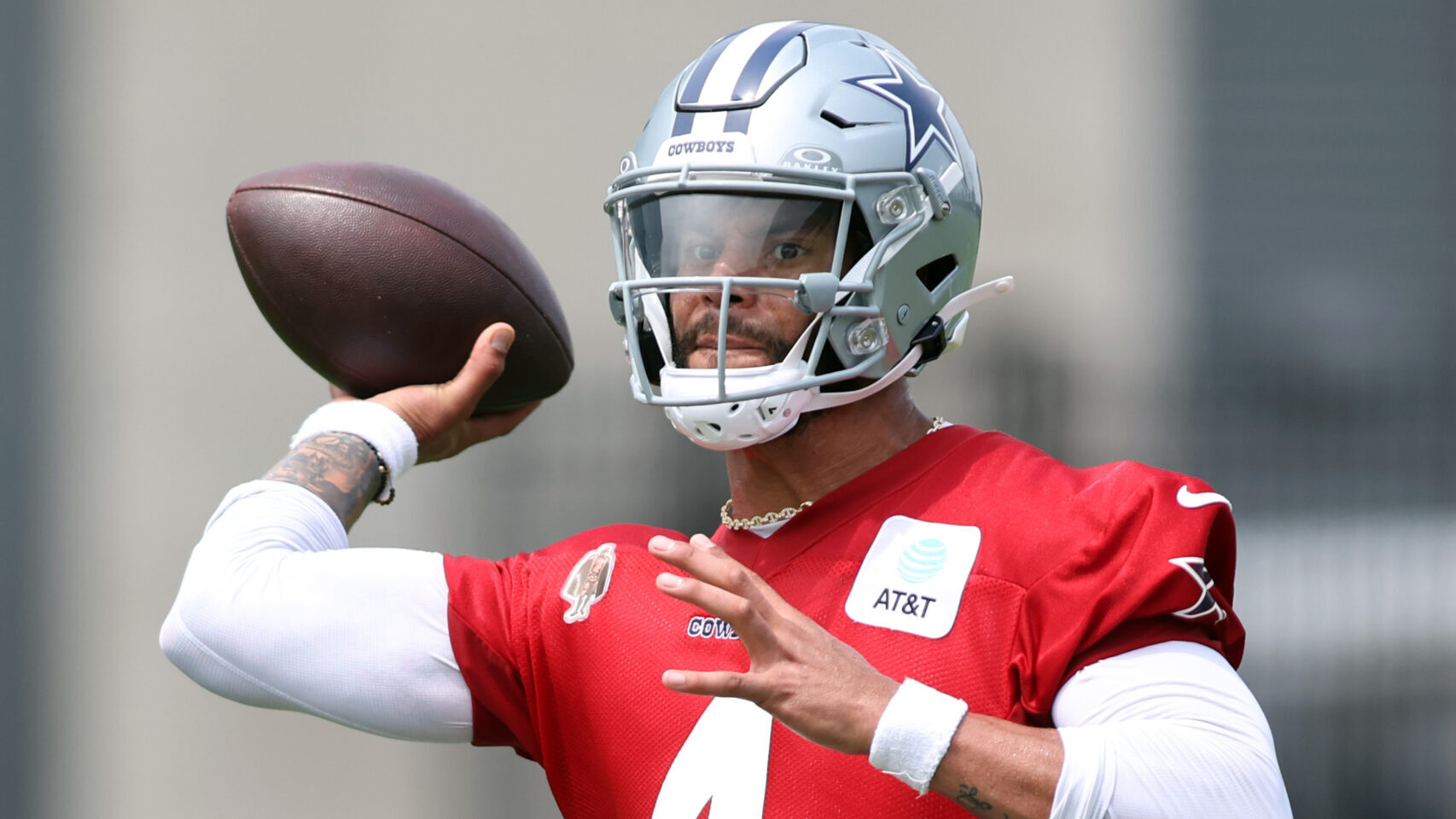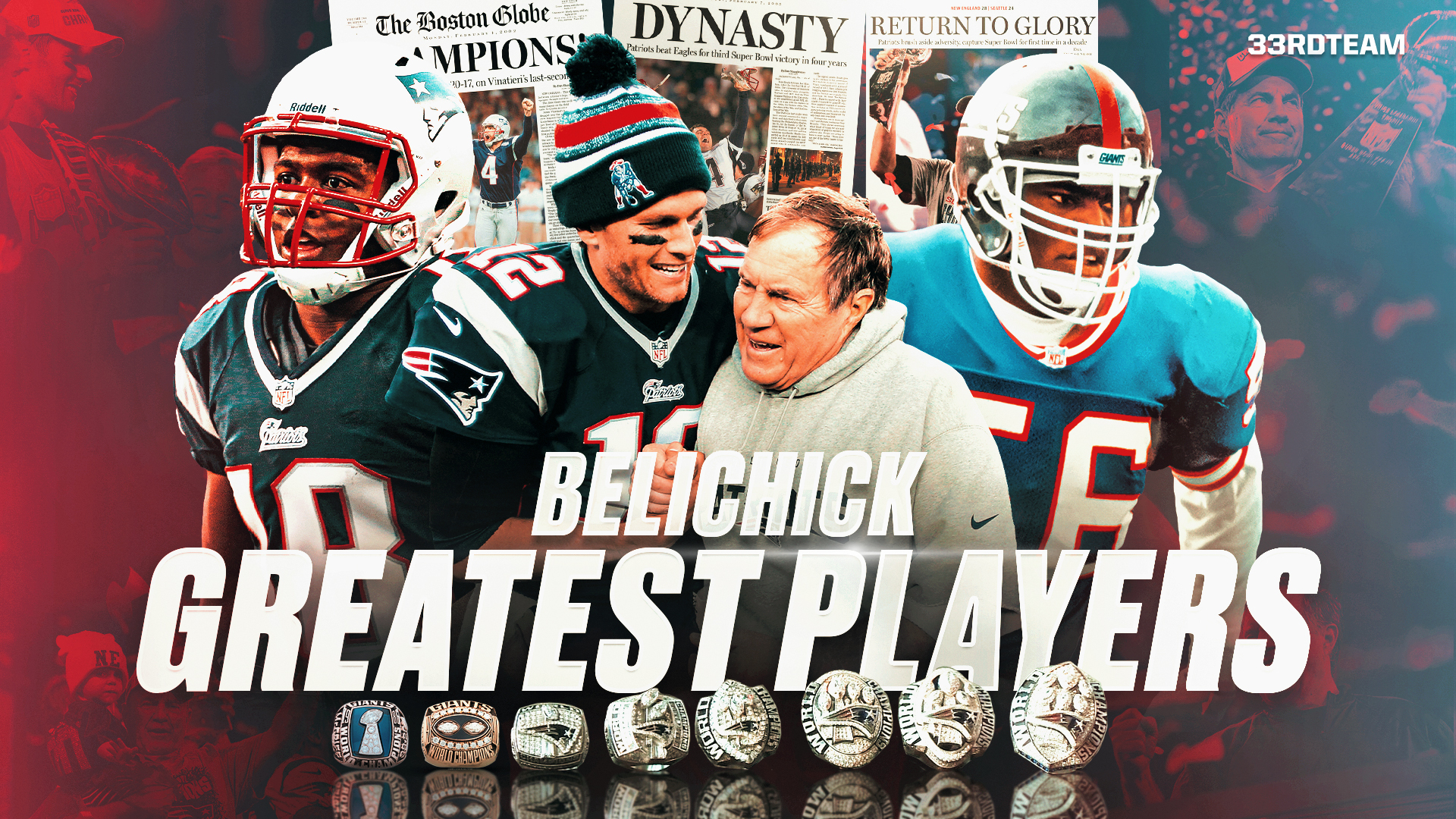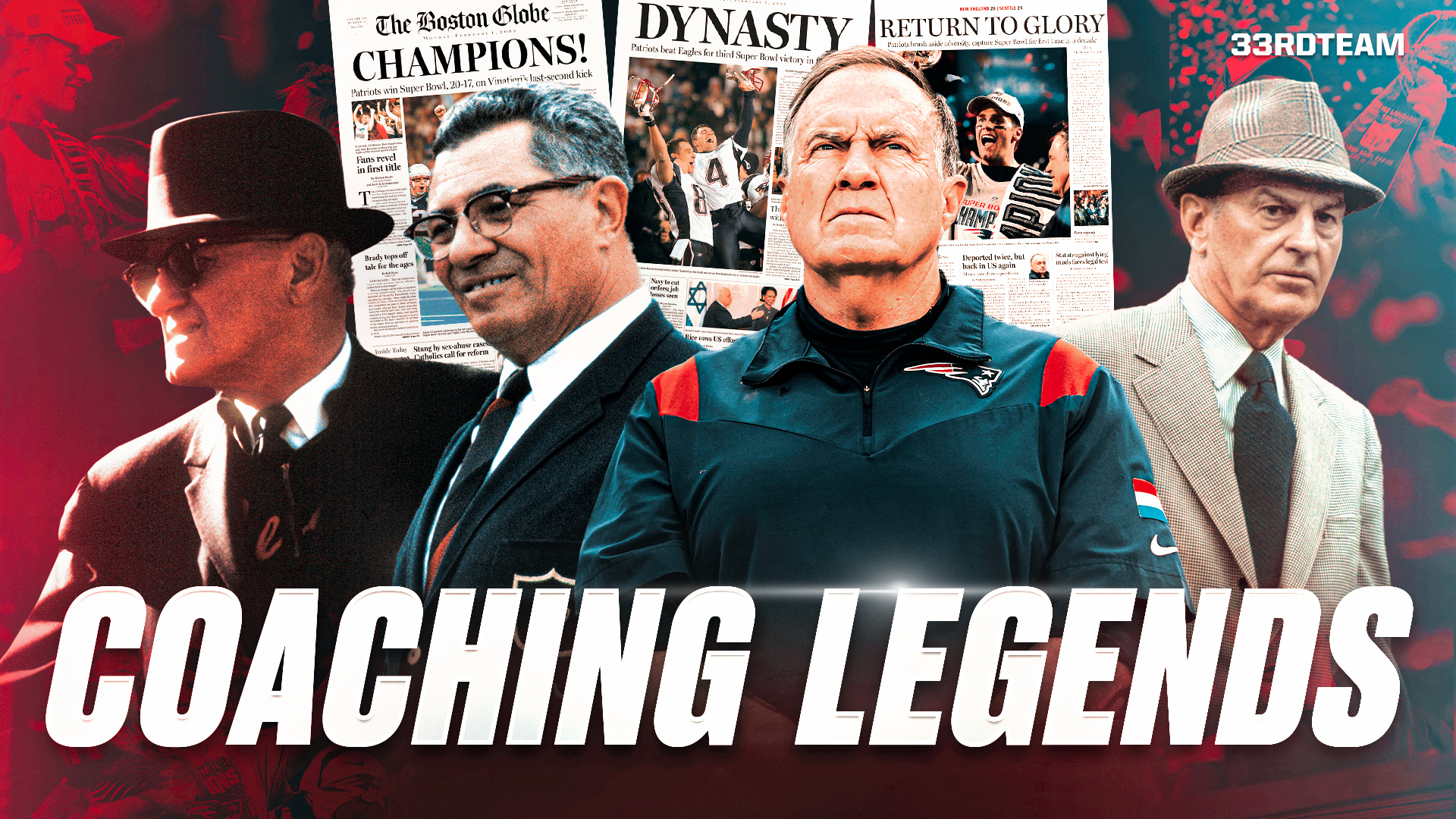Analysis
2/16/23
9 min read
History of Scouting Combine, Why It's Important to NFL Teams
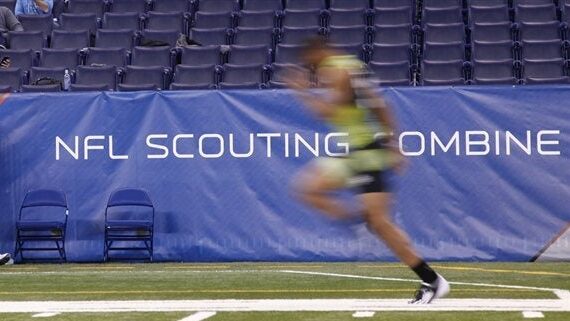
The following is the first of a two-part series on the NFL Scouting Combine. Part 1 explores the history and growth of the event. Part 2 will cover how and why the work done at the combine is used and how clubs prepare for this very important scouting event.
>> Full List of 2023 NFL Combine Participants
The Super Bowl is over. The combine begins Feb. 27. Free agency and the new league year begin March 15. The NFL never stops.
With the extension of the season to 17 games and the expansion of the playoffs to 14 teams, the coaching staffs from the teams that lost in the Divisional Round of the playoffs will have had barely a month to wrap up their season and take a breath and a break.
The final four teams have just finished their end-of-season wrap-ups. The Super Bowl staffs will have a tad more than two weeks between the biggest, most emotional game of their lives and the start of the 2023 work year. Incredible.
NFL Scouting Combine History
People frequently ask, "What is the combine? How did it come to exist? How does it affect each club's and player's draft status?" I'm happy to answer for two reasons. One, a number of people not directly related to the combine often give uninformed opinions about the combine. Two, as a former NFL VP of Football Operations, two-decade member of the NFL Competition Committee and chairman of the College Relations Committee, I was directly involved in formulating rules and policies which govern the combine.
In addition, between the first full league combine in Tempe, Ariz., in 1985 through 2019, I attended every combine in various capacities ranging from pro scout to club executive to media member.
What is the combine? Let's start with some history and the derivation of the name.
[bc_video video_id="6320046938112" account_id="6312875271001" player_id="default" embed="in-page" padding_top="56%" autoplay="" min_width="0px" playsinline="playsinline" picture_in_picture="" language_detection="" max_width="640px" mute="" width="100%" height="100%" aspect_ratio="16:9" sizing="responsive" ]
In the late 1950s, pro football, in the form of the NFL, began its climb to the top of the American sports world. The NFL had been around since 1920, but only in 1958, when its championship game between the New York Football Giants and the Baltimore Colts was televised nationally, did it reach the popularity level of Major League Baseball. That game was played in New York, then and now the media capital of the world. It went to overtime, and the Colts dramatically prevailed. The game was quickly christened "The Greatest Ever Played," and the NFL became a hot property. A national TV contract for the league soon followed.
So quickly did NFL popularity skyrocket that in 1960 a rival league, the American Football League, was born. By 1967, the two rivals had agreed to merge because of unsustainable player costs caused by intramural bidding. From that merger between the two leagues, the Super Bowl was created. The fight between the two leagues centered around the competition for the top collegiate players each year.
Each league had a draft, and each hired people, such as former players, former college coaches and others from the greater football community as recruiters, "babysitters," and negotiators of contracts. They sequestered the players from their rival league and tried to sign them to lucrative contracts. Many from this group of "signers" gravitated to newly formed scouting staffs, though many remained part-time, and most teams averaged three or fewer scouts to cover the nation.
The financial fight between the two leagues had driven more than a few teams to the brink of insolvency. My future boss in Buffalo, Bills owner Ralph Wilson, had to loan Al Davis a significant sum of money to keep the Oakland Raiders afloat. The financial reality was that, despite the peace between the leagues, a common draft and the emerging Super Bowl, the NFL was still very much a Mom and Pop business.
In the interest of financial stability, you had to, as the saying goes, "Count every sock and jock." With this accent on prudent financial management, legendary executives and coaches, like Hall of Famers Tex Schramm, Jim Finks, Paul Brown, Don Shula, Gil Brandt and Dan Rooney constantly worked to make scouting and the draft process as economical and efficient as possible. In later years, George Young, Ron Wolf, Bobby Beathard and myself carried on that objective.
>> READ The 33rd Team's Mock Draft 3.1
Combining Combines
In the '70s, the idea of shared scouting personnel, information and costs among small groups of teams was born. Groups like BLESTO (which stood for Bears, Lions, Eagles, Steelers Talent Organization) were formed. Groups like CEPO (Central Eastern Personnel Organization) and National Football Scouting soon emerged. Virtually every team in the league, except the Raiders, belonged to a group soon accurately named a scouting combine.
In the early '80s, the three existing combines decided to stage individual camps for prospects before the draft. At these camps, players were given physical exams, weighed, and measured and timed in the 40-yard dash and certain other drills typical of an on-campus workout. It soon became apparent that doing all of this in one place for many teams was more efficient than putting players through 28 different physicals and workouts.
[bc_video video_id="6320003518112" account_id="6312875271001" player_id="default" embed="in-page" padding_top="56%" autoplay="" min_width="0px" playsinline="playsinline" picture_in_picture="" language_detection="" max_width="640px" mute="" width="100%" height="100%" aspect_ratio="16:9" sizing="responsive" ]
After a few years, it was obvious that one central pre-draft physical camp serving all 28 teams made much more sense than three. In addition, college head coaches complained to us that players were missing too many classes by traipsing around the country for NFL testing. That concern no longer exists as most players entering the draft (save for early-entry underclassmen) have graduated by December of their senior year. Thus began a dialogue with the college coaches that produced rules concerning early entry for underclassmen, the exchange of college game tape and the creation of "Pro Days" on college campuses for those not invited to the combine.
Having decided that one central pre-draft camp for a select number of draft-eligible collegians was appropriate, the leaders of the three existing combines got together to formulate plans and priorities. They created a corporate entity, owned jointly by all teams and christened it the National Invitation Camp. The first such camp was held in 1985, outdoors in Tempe, Ariz. It was nicknamed the "combine," as it is called to this day.
Outdoors, even in Arizona in March, didn't work because of unpredictable weather negatively impacting the event. In 1986, the combine moved to New Orleans. The Superdome, however, couldn't accommodate the event every year because of scheduling conflicts. Therefore, in 1987, it moved to Indianapolis, where it remains to this day.
Lucas Oil Stadium, which replaced the RCA Dome in 2008, was specifically designed with the combine in mind. As a result, the overwhelming majority of work, including MRI exams, is done under one roof instead of having players shuttle to satellite medical facilities. If the football people in the NFL had a vote, the combine would remain permanently in Indianapolis because of its centrality and efficiency.
Full List of 2023 NFL Draft Picks for Every Team
What Happens at the Combine?
The priority of the combine, as set by the "Founding Fathers" and reaffirmed by the Competition Committee year after year, is the physical examinations. This is the overriding reason for the combine. This physical is extensive. It is similar and, for similar reasons, is akin to that given to candidates for service in fire, police, and military organizations.
While it provides the club with essential data on potential employees, it also provides players with a complete assessment of their health and their ability to withstand the rigors of pro football, the likes of which they have never had. Every year, we discover players with severe or life-threatening medical conditions that have gone unnoticed throughout their college careers. This is not a burden but an obvious benefit to the players.
The administration of the physicals is extremely efficient. The doctors work in pods of four, one from each team, and all information is shared. If MRI exams are needed, they are done quickly and safely. Again, all information is shared. No player "spends all day in an MRI machine," a tall tale recently making the rounds. These physicals are for the players' and the clubs' benefit.
Suppose a player has a condition such as asthma or non-disqualifying heart abnormality. In that case, the club trainer and doctor need to know to safeguard his health and treat him appropriately. With the Colts, our doctors never knew what the pre-combine draft grade on a specific player was. Everyone was and is treated equally.
As George Young often stated, "If all we could do at the combine were physicals, it would be well worth it. It is by far the most important reason for the combine." The remainder of the work at the combine consists of timing, physical testing, on-field drills, psychological testing and interviews. We'll cover those components in depth in Part Two.
To summarize, the combine was conceived as an efficient and highly organized way of getting critical medical data and measurables on more than 325 draft-eligible collegiate players. It had one purpose and one purpose only: to help football people make informed judgments on football players.
The fact that the combine has morphed into a TV show, press extravaganza, trade show and agent convention is totally beside the point. The above is what I like to call "The Draft Industrial Complex." None of it sells a ticket or wins a game. If all the extraneous things ended tomorrow, the combine would still be, at its core, about physical examinations. Scouting folks are indefatigable and adaptable.
Without the combine, we would still find a way to get the information we need. It would just cost teams a lot more money. That's why the original idea was conceived.
As told to Vic Carucci
Bill Polian is a former front office executive and a six-time Executive of the Year award winner who won Super Bowl XLI with the Indianapolis Colts. Polian's career as an executive earned him an induction into the Pro Football Hall of Fame in 2015.

